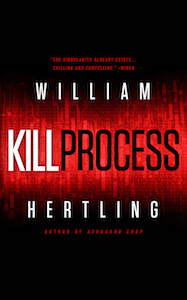Disclosure: I work for HP.
140 character customer support
Caroline McCarthy – covering social media for CNET news
Frank Eliason – Comcast Frank @comcastcares
Toby Richards – Microsoft. Everything that’s not phone support
Lois Townsend – @ltownsend, HP’s Social Media Strategy
Jeremiah Owyang – altimeter
- Recently in the news Kevin Smith, getting kicked off the Southwest plane. He twittered about it.
- Is twitter really the best place for this?
- Frank: It’s the customer’s platform. They can use it to affect policy.
- Lois: It’s a way to connect with the customer, but not necessarily converse. Ideally you would reach them before they get so angry (like with Kevin). Our goal is to get a hold of them and get them to help. Like a virtual concierge.
- Frank: I disagree. It is a place for a dialogue. Kevin Smith’s problem could have gotten resolved right at the airport over twitter. But we don’t want to do different things just because someone is being loud. That isn’t customer service, that is just PR.
- Everyone would like their cable to be free. But we can’t do that. But we can have a discussion about why it is what it is. We can become more transparent.
- Does your PR department or your customer service department manage your twitter connection? How much should they be communicating?
- Jeremiah: They should be wearing the same shoes. Customer support is PR. Customer’s don’t care what department you’re in, they just want their problem solved.
- Is anyone from other parts of the company watching over you, telling you what you can and can’t say? (directed first at Toby)
- Well, I was just part of the panel on “don’t be sued”. The attitude we have now is to be as transparent as possible. It doesn’t always mean saying yes to the customer. There’s no oversight on how we engage in customer support in the public domain. But there are core principles, and there is a conversation. You can create a harmonious working relationship with the different departments.
- What happens if you get Kevin Smith’ed? He’s got millions of followers, and even fanboys. He can motivate a lot of people.
- Frank: We’ve had it happen. We have some people who are very loud about it. But the biggest hit to the Comcast brand are two videos on YouTube that still show up first. They didn’t come from 1M+ followers, just regular people.
- Frank: We had an issue with nudity during the super bowl. But we were talking about it and telling people what we knew in real time. It quickly become boring, which diffused it.
- Toby: We’ve had lots of people come to forums with issues. One big issue, we were able to respond quickly, get a patch out, tell people about it, and issue was resolved in a week.
- Lois: We had one, where our product appeared to be racist (referral to the webcam face detection), we responded quickly, we explained the limitations of the technology. Many of our things are pretty boring… People were frustrated by lack of drivers, we explained what goes into getting a driver released and why it took time.
- Q: What are the listening tools?
- Toby: We use blue ocean. We have an internal process for escalation. We have call monitoring, community forum monitoring. We have a process to get an issue to the right person fast. Some issues are really hot and require immediate respond, some are more systemic issues that we drive over time.
- Lois: The listening tools make our jobs so exciting. We can get this information from our customers, and bring it to our colleagues, and it is extremely compelling to be able to bring customer words. HP, Microsoft, we’re big companies, and there’s tons of metrics and reports, but they are dry compared to customer words.
- Frank: We use radiance. But you can start with twitter search, google mob search.
- Jeremiah: We just published a report on social CRM tools. Social media is not scalable. Frank has how many managers… (10 community managers)… You can’t scale in real time.
- Frank disagreed: it can be scaled. not all 25M customers are saying comcast, comcast, comcast all day. If so, phones wouldn’t scale either. At one time Legal said it wouldn’t scale, but Legal doesn’t review everything that goes out.
- Q: How large are your teams? Are they spread out or in one location? How do you manage expectations of responsiveness?
- Lois: my direct reports are very small. 11 people. But beyond that, there is an incredible virtual network… we call it the HP Ambassador problem… We have about 75 employees who are very active in responding to customer problems. It ranges from a dozen to up to a 100 people, depending on how you count.
- Frank: We have 10 people, plus a manager. We review about 10,000 blog posts a day, about 2,000 twitter posts a day, about 200 facebook posts, about 600 forum posts a day. The bulk of the word my team is to put an email address in forums, and we get about 6,000 emails a month, and that is the bulk of what we do is refer.
- Toby: (missed some of the data…) we have about 200 people in low-cost labor markets that are present in various online communities. We connect with people in social media… the community influencers. We can get scale, and reach by working with these community influencers.
- Q: How do you bridge the gap between the online world and the real world (e.g. with Kevin Smith – on twitter, Kevin had received a response, but the gate agent didn’t know about.)
- Lois: sometimes the front-line person doesn’t have the same knowledge of what can be done for a customer. We had a customer who was in Spain… our twitter person was able to get him an agent who could help him in English, in his motor home, in Spain, with his English product.
- Frank: but have you changed your process for your Spanish speaking agents, so that they have a process for getting an English agent for a customer that needs it.
- Lois: agreed, you solve the immediate problem, but you need to use that feedback to make improvements.
- Q: What about using social CRM?
- Jeremiah: We need social CRM to be able to tie customer records to these social interactions, so that we can track,
- Frank: it’s about changing the company culture to be customer service centered
- Problem: Are you rewarding your customers that the best way to get support is to yell at your friends?
- Frank: the customer was already doing this before we ever showed up. They were choosing to yell. But by responding, you change these people into advocates when you help them.
- Frank: regarding spam, we’ll look at it once, and ask if they need help, but we won’t go on forever. We can agree to disagree, and be nice throughout the whole thing. You will have sometimes people that are very personal, hurtful, and angry. You have to have thick skin in this place.
- Toby: Agree. We have a lot of customers, those customers don’t have access to Microsoft people, they don’t see us as people. But if we can engage, that changes things.
- Lois: You’re not being measured on the cost of the phone call in this case, so you do have the ability to carry on more of a conversation. We can learn about what happens when customers have relatively unique configurations, and then share those lessons with other customers.
- Lois: We are, to an extent, a minor part of the community. 95% of interactions are among the community, without HP being involved. Those community interactions are really rich. People are helping each other.
- Q: Do you have policies about employees doing social media? Do you have a social media style guide about what those interactions should look like.
- Frank: We do have a policy. it’s simple: don’t release proprietary information that isn’t available to the public, be nice, be honest, be truthful about who you are. But we don’t center it in one style… Person should be themselves.
- Toby: The people who are working for you to work in the community become part of the community, they are recognized as individuals. We tell people to let the marketing team make the value proposition for new products, not to tell people what they think.
- Q: First, when you introduced social media customer support, how did you leverage traditional channels? How did you get them integrated? Second, in a global environment, how does this play out in other countries where you might have support? Third, from a b-to-2, what kind of social channels are you planning for that?
- Jeremiah: tell people on phone hold about your community, show it on your website. on the website, it shows that there is a thriving community.
- Lois: We did forums early, but they were very agent focused. Not much of a true community, just a different kind of agent support. When we relaunched, we worked hard to foster the community.
- Toby: When we start a new community or venture, we have a dedicated team at first, and after the kinks are worked out, then we diffuse it into the rest of the organization. We believe in having a center of excellence, in making sure we have the skills to engage with customers online.
- Lois: We started with English, then did six additional languages. Now we’re focused on improving those forums. When you do language localization for official support, it has to be perfect. When people communicate in forums, they are very forgiving of 2nd, 3rd levels – it just has to be helpful, it doesn’t have to be perfect.
- Q: How to deal with dissonance of excellent customer service via twitter versus torturous customer service by phone.
- Frank: we have to put it in the face of executives to show it. We’re measuring on the number of customers we help, not how many emails we send. So we work to do something with the feedback we get. Not overnight, but we are changing. Comcast’s credo is now centered on best customer experience.






Thank you for posting the notes, great insights!
I couldn’t make this session. Thank you for the notes.
I actually enjoyed reading through this posting.Many thanks.
Know Your Customer